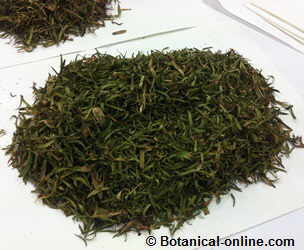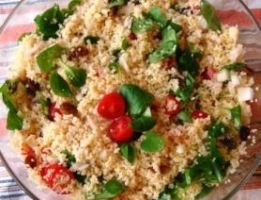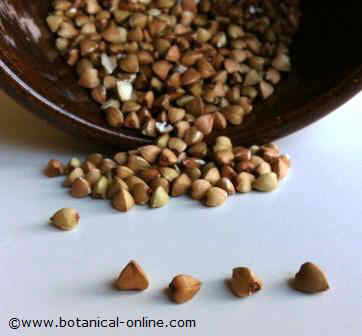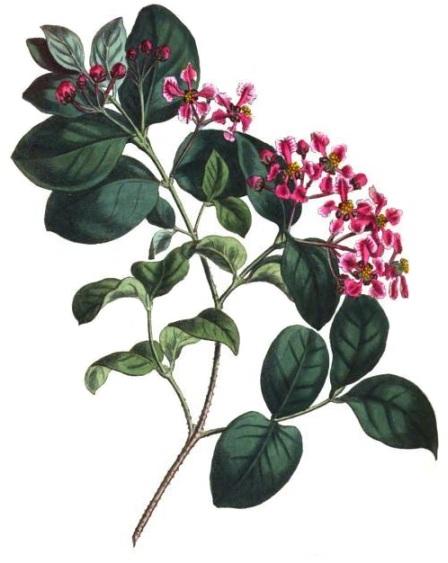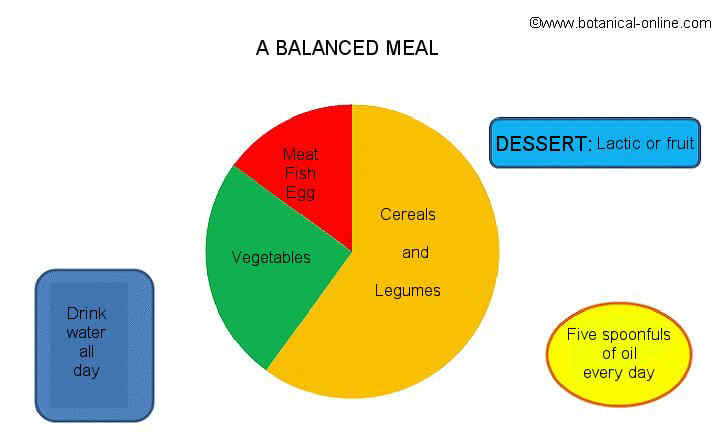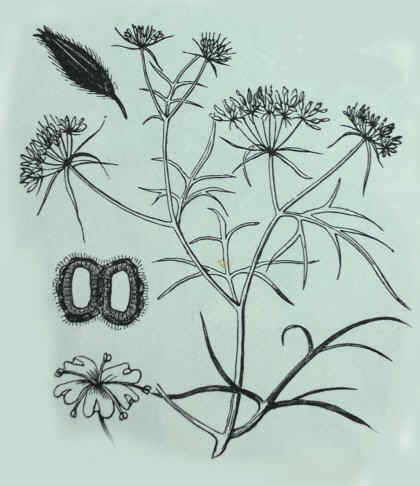Contents
- 1 Medicinal properties of millet
- 1.1 MILLET EDIBLE PROPERTIES
- 1.2 What are the benefits of millet?
- 1.3 Millet proteins: reconstituting cereal without gluten
- 1.4 Millet, the most energetic cereal
- 1.5 Millet: A very high-fiber cereal
- 1.6 Minerals of millet
- 1.7 Vitamins of millet
- 1.8 Other properties of millet
- 1.9 Drawbacks of millet
- 1.10 How to preserve millet
- 1.11 Comparison between millet and rice
Medicinal properties of millet
MILLET EDIBLE PROPERTIES
What are the benefits of millet?
Millet (Panicum miliaceum) is a cereal rich in complex carbohydrates, protein, vitamins and minerals.
Because of its high carbohydrate content, it is an ideal food to provide the energy necessary for our organism.
Since it mostly contains complex carbohydrates, not simple, its absorption is slower and do not cause sudden increases in blood glucose, making it the type of food a person with diabetes can consume. Obviously, with the suitable diet and taking into account the needs of every patient.
It is a cereal without gluten, which can be used as a substitute for cereals or foods containing gluten or simply to expand the variation of foods in our diet..
Millet proteins: reconstituting cereal without gluten
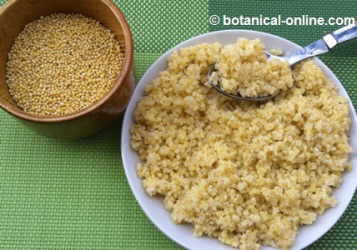 Photography of raw millet (left) and cooked (right).
Photography of raw millet (left) and cooked (right).Millet contains more protein than rice.
It is suitable for people with celiac disease, because it contains no gluten. (It should be consulted in packaging that it has not been manufactured in a factory handling wheat or other allergens)
Millet is one of the cereals having better digestion, being easily assimilated.
Macrobiotic cooking considers it a great restorative that helps balance the healthy intestinal flora.
Millet, the most energetic cereal
Another parameter that makes it a highly nutritious cereal is its fat content. Millet is richer in fats than rice
Besides, it provides good quality fats for people with cholesterol because they are mainly polyunsaturated and monounsaturated, that is to say, heart-healthy fats.
Millet provides essential fatty acids (linoleic and linolenic acid) and lecithin. These nutrients are necessary for the proper functioning of the nervous system, as they are part of brain neurotransmitters. Because of these components, this cereal can be considered a very suitable food for bad mood, depression, fatigue, stress, hyperactivity, or persons liable for any intellectual effort. In the guidance of Dr. Jean Luke Darrigol (1981), millet is recommended as a suitable cereal against memory loss and fatigue.
People with obesity or cholesterol should moderate carbohydrates intake, because, depending on the type of dyslipidemia they may suffer, for example, if triglycerides are high, they should control the supply of energy. A ration of millet is 60-70 g. raw.
A food beeing virtually fat free is not necessary a non-fattening food if we consume it in larger amounts than the required ones. All excessive intake just becomes fat accumulated in our body, in the adipose tissue.
Millet: A very high-fiber cereal
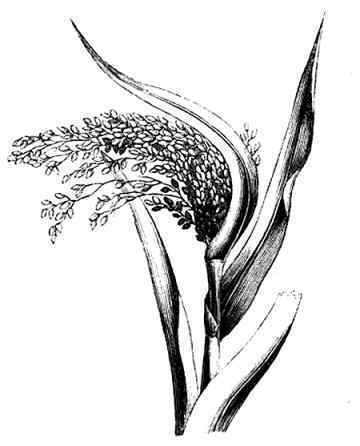
Botanical illustration
Millet is much richer in fiber than rice. It is one of the cereals containing the highest amount of vegetable fiber. Fiber helps regulate sugar absorption and improves the regulation of blood levels. For this reason, it is a suitable cereal in the diabetic diet.
Fiber also acts as a regulator of intestinal transit and has prebiotic effect on the microbiota.
Soluble fiber is recommended for cases of diarrhea and non-soluble fiber for constipation.
Its use is also recommended in people who suffer from overweight or obesity and want to reduce their weight, because soluble fiber gives virtually no calories and increases satiety. This is because it expands upon contact with water. For this reason, one should always drink abundantly.
| Nutritional composition of millet per 100g. | |
| Calories (kcal) | 378 |
| Fat (g) | 4,22 |
| Proteins (g) | 11,02 |
| Carbohydrates (g) | 72,85 |
| Fiber (g) | 8,5 |
| Potassium (mg) | 195 |
| Sodium(mg) | 5 |
| Phosphorus (mg) | 285 |
| Magnesium (mg) | 114 |
| Iron (mg) | 3 |
| Zinc (mg) | 1,68 |
| Vitamin B1 (Thiamin) (mg) | 0,42 |
| Vitamin B2 (Riboflavin) (mg) | 0,29 |
| Vitamin B3 (Niacin) | 4,72 |
| Vitamina B5 (Pantothenic acid) (mg) | 0,84 |
| Vitamina B6 (Pyridoxin) (mg) | 0,38 |
| Vitamina B9 (Folacin) (mcg) | 85 |
| Vitamin E (mg) | 0,18 |
Minerals of millet
Because of its high mineral content, it is beneficial in a number of conditions:
- It contains iron with a similar contribution of other cereals. Although there are more foods rich in minerals for anemia, millet carbohydrates are a very good source of energy essential to help overcome fatigue.
- It is high in phosphorus . This mineral is essential for our body at the level of both physical and mental vitality and proper maintenance. Millet is very suitable in situations of fatigue, asthenia, and even cases of depression or to help increase memory.
- Millet is rich in magnesium, more than many other grains. For example, rice provides us with 25 mg. magnesium per 100g., and millet, for the same amount, gives us 114 mg. Magnesium deficiency can cause muscle cramps and its needs increase in athletes, fibromyalgia, fatigue and situations of intellectual or physical stress.
Magnesium alkalizes the body, so it is very important to supply it by means of adding millet to our diet, instead of other cereals having a lower content.
As a whole, Millet is a good source of minerals, because it also contains calcium, potassium, sodium, zinc, copper, selenium and manganese. Zinc and selenium are antioxidants and very beneficial for our immune system.
Vitamins of millet
Like all grains, millet is an important source of B vitamins, necessary for energy production, for toning the nervous system and generating the states of relaxation that can very beneficial against stress and healthy brain state. However, millet is also involved in other areas, such as glandular level. More concretely:
- Thiamine: Indicated in deficiency syndromes of vitamin, in nervous inflammatory problems, pregnancy and alcoholism.
- Riboflavin and folate: Indicated in periods of lactation and pregnancy, both to meet the needs ot these micronutrients, that are increased during this situation, as to properly perform the development of the baby’s nervous system. They also reinforce the health of our hair and nails.
- Pantothenic acid: Precursor in the manufacture of a protein called elastin, interesting for the regeneration and maintenance of skin tendons, and muscle mass.
- Niacin and pyridoxine: It is involved in maintaining a good condition of the immune system.
- Attention! Unlike what is said in many articles, millet does not contain vitamin A, vitamin C, and vitamin D.
Furthermore, millet contains little vitamin E in its flour as this vitamin is concentrated mainly in the germ of this cereal, that is discarded when the grain is ground. The whole grain has a higher content.
Other properties of millet
- It is suitable for people with gout or uric acid , due to its low content in purines.
- It is a food with a high content of lecithin, that prevents the formation of atheromatous plaques, caused by an excess of cholesterol in the blood vessels, which can end up causing diseases as relevant as arteriosclerosis or thrombosis.
- Also, if the grain of millet, is subjected to fermentation, we will increase the digestibility of this cereal, being better tolerated in people who have difficult digestion or feel discomfort or heaviness, because fermentation increases tolerance.
Instead of cooking millet, we can germinate it. This will increase the concentration of macronutrients and micronutrients, which is beneficial because we will enhance its nutritional content
Drawbacks of millet
Cereal grains, including millet, may contain a wide variety of endogenous antinutritional factors if they are ingested raw.
These factors are toxins or inappropriate substances that are toxic unless they are destroyed by heat. As, for example, phytohemagglutinin, protease inhibitors, or phytic acid.
When properly cooked, these factors are destroyed and grains are edible.
How to preserve millet
It is recommended to buy millet properly packaged, wash the cereal before cooking, and keep it in an airtight container in a cool, dry place.
Comparison between millet and rice
- Millet is richer in protein, fats (healthy), fiber, potassium, phosphorus, magnesium, manganese and zinc.
- White rice contains more carbohydrates, B vitamins, iron and selenium.
| Nutritional comparison between rice and millet | ||
| White rice | Millet | |
| Calories (kcal) | 365 | 378 |
| Fat (g) | 0,66 | 4,22 |
| Proteins (g) | 7,13 | 11,02 |
| Carbohydrates (g) | 79,95 | 72,85 |
| Fiber (g) | 1,3 | 8,5 |
| Potassium (mg) | 115 | 195 |
| Sodium(mg) | 5 | 5 |
| Phosphorus (mg) | 115 | 285 |
| Calcium (mg) | 28 | 8 |
| Copper (mg) | 0,22 | 0,75 |
| Manganese (mg) | 1,09 | 1,63 |
| Magnesium (mg) | 25 | 114 |
| Iron (mg) | 4,3 | 3 |
| Zinc (mg) | 1,09 | 1,68 |
| Selenium (mcg) | 15,1 | 2,7 |
| Vitamin B1 (Thiamin) (mg) | 0,58 | 0,42 |
| Vitamin B2 (Riboflavin) (mg) | 0,05 | 0,29 |
| Vitamin B3 (Niacin) | 4,19 | 4,72 |
| Vitamin B5 (Pantothenic acid) (mg) | 1,01 | 0,84 |
| Vitamin B6 (Pyridoxin) (mg) | 0,16 | 0,38 |
| Vitamin B9 (Folacin) (mcg) | 231 | 85 |
| Vitamin E (mg) | 0,13 | 0,18 |
![]() More information on millet.
More information on millet.

